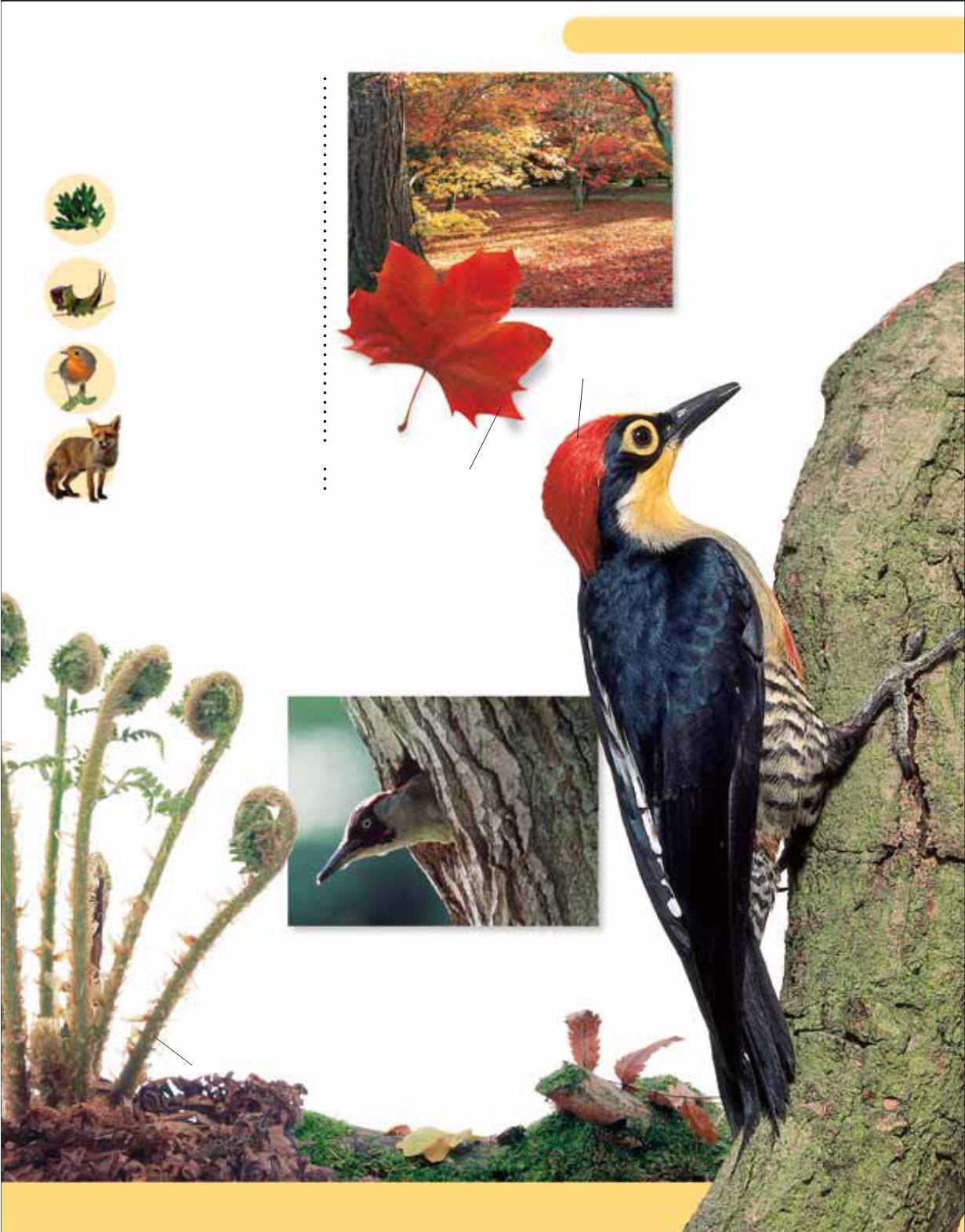
Caterpillars
– and many
other insects – chew on
leaves. That’s their food.
Birds
hunt caterpillars,
especially in spring when
they have chicks to feed.
Foxes
prey on birds,
small mammals, and
other creatures.
Autumn colours
In the growing season,
deciduous leaves
appear green because
of a chemical called
chlorophyll. In autumn,
the leaves turn yellow,
brown, or red as the
chlorophyll is destroyed.
Making an entrance
Woodpeckers use their beaks to dig
out grubs and to make nest holes. They
have amazingly long tongues
to probe and seek out insects.
A squirrel’s tail helps it to balance as it leaps from tree to tree.
Deciduous forests
Leaves
act like solar
panels to gather sunlight
to make food.
Links in a chain
Food chains connect a
species with what it eats.
Woodpeckers have thick skulls to
protect against the shock as they
hammer into wood.
Trees as homes
Woodpeckers take two to three
weeks to dig out a nest hole,
into which the female lays
several eggs. The hole is
usually in a dead tree.
Woodpecker
Maple leaf
When mature,
a fern bud
unrolls and
the leaflets
open out.
A leaf is a tree's food
factory. In autumn, it
begins to shut down.


